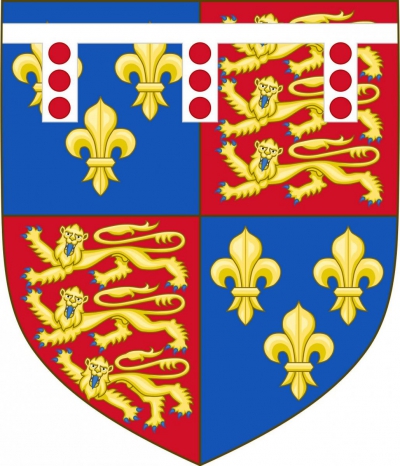The Battle of Barnet was a decisive engagement in the Wars of the Roses, a dynastic conflict of 15th-century England. The military action, along with the subsequent Battle of Tewkesbury, secured the throne for Edward IV. On Sunday 14 April 1471, Easter Day, near Barnet, then a small Hertfordshire town north of London, Edward led the House of York in a fight against the House of Lancaster, which backed Henry VI for the throne. Leading the Lancastrian army was Richard Neville, Earl of Warwick, who played a crucial role in the fate of each king. Historians regard the battle as one of the most important clashes in the Wars of the Roses, since it brought about a decisive turn in the fortunes of the two houses. Edward's victory was followed by 14 years of Yorkist rule over England.
Formerly a key figure in the Yorkist cause, Warwick defected to the Lancastrians over disagreements about Edward's nepotism, secret marriage, and foreign policy. Leading a Lancastrian army, the earl defeated his former allies, forcing Edward to flee to Burgundy in October 1470. The Yorkist king persuaded his host, Charles the Bold, the Duke of Burgundy, to help him regain the English throne. Leading an army raised with Burgundian money, Edward launched his invasion of England, which culminated at the fields north of Barnet. Under cover of darkness, the Yorkists moved close to the Lancastrians and clashed in a thick fog at dawn. As both armies fought, the Earl of Oxford on the Lancastrian right routed the Yorkists opposite under Lord Hastings, chasing them back to Barnet. On their return to the battlefield, Oxford's men were erroneously shot at by the Lancastrian centre commanded by Lord Montagu. As cries of treason (always a possibility in that chaotic period) spread through their line, Lancastrian morale was disrupted and many abandoned the fight. While retreating, Warwick was killed by Yorkist soldiers.
Warwick had been such an influential figure in 15th-century English politics that, on his death, no one matched him in terms of power and popularity. Deprived of Warwick's support, the Lancastrians suffered their final defeat at the Battle of Tewkesbury on 4 May, which marked the end of the reign of Henry VI and the restoration of the House of York. Three centuries after the Battle of Barnet, a stone obelisk was raised on the spot where Warwick purportedly died.
The House of York was a cadet branch of the English royal House of Plantagenet. Three of its members became kings of England in the late 15th century. The House of York descended in the male line from Edmund of Langley, 1st Duke of York, the fourth surviving son of Edward III. In time, it also represented Edward III's senior line, when an heir of York married the heiress-descendant of Lionel, Duke of Clarence, Edward III's second surviving son. It is based on these descents that they claimed the English crown. Compared with its rival, the House of Lancaster, it had a superior claim to the throne of England according to cognatic primogeniture, but an inferior claim according to agnatic primogeniture. The reign of this dynasty ended with the death of Richard III of England at the Battle of Bosworth Field in 1485. It became extinct in the male line with the death of Edward Plantagenet, 17th Earl of Warwick, in 1499.

 English
English  español
español  français
français  português
português  русский
русский  العربية
العربية  简体中文
简体中文 
